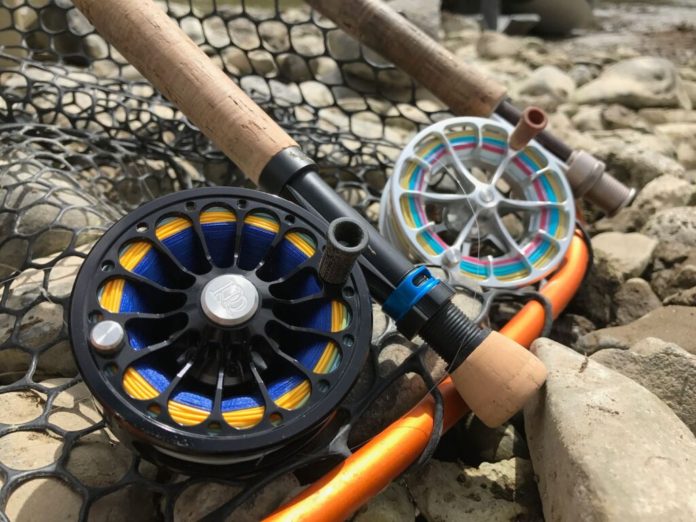The amount of new fly anglers entering the river in the past year has been astounding.
Urbanites across Colorado are heading to the mountains for a much needed COVID-19 escape. Even locals who have never before lifted a fly rod are looking at the sport with a newly acquired focus. These facts support a revisiting to the rigging, knots and reasons for setting up your fly rod, a back to basics for those new to the sport.
You have a new fly rod and reel but neglected to purchase the pre-rigged packages so many companies are producing. The absolute best way to have your rod rigged with backing, line and leader is with the assistance of your local fly shop.
However there is no learning involved in that path. Neophyte fly anglers should have a thirst for this basic knowledge and want to learn the proper techniques.
The backing and line
Backing is a small diameter, high strength woven or braided line. It is directly attached to the arbor or spool of your fly reel. Some anglers choose to secure this with a knot that will never detach. I believe the knot should attach the backing with enough tension to provide security, but should release if tested. I use a double overhand knot.
The reason being should you hook a bridge, tree or solid bank and are unable to break free the fly and are losing the entire fly line in the rapids the knot will give way and release the backing and fly line without yanking the highly expensive rod and reel from your grip. Better to lose a whole fly line than the entire outfit.
If you are at the point in the battle where you are approaching the end of your backing you have already lost the game. Checkmate.
Fly line is attached to the backing with an Albright knot. The wrapping and cinching involved with this knot creates a slim, secure connection that will pass through the guides easily. Some anglers use a Bimini Twist in the backing if the fly line has a rear loop. And in the saltwater where I have a greater chance of seeing my backing I use the Bimini.
Leaders and tippets
Leaders have progressed to the point where loops are pre-tied on the butt end of the leader. Modern fly lines have a welded loop designed into the fly line material to create a loop to loop, handshake knot. This really eases the effort anglers need to exert when it comes time to change your leader.
Tippet, the last piece of mono or fluorocarbon, is attached to the leader with a Uni to Uni knot or a Surgeon’s knot. This is a point of personal preference and often revolves around which knot is easier for the angler to tie.
As with all knots made in monofilament or fluorocarbon the material needs to be wet to lubricate the knot correctly. Cinching down a dry knot heats up the tippet material, weakening the breaking strength.
The terminal knot for attaching the fly to the tippet is some type of Clinch knot. Whether it is an Improved Clinch knot or a simple Clinch knot lubricate the knot before tightening securely to the fly.
The only other knot I use regularly for attaching flies is a No-slip Loop knot. I use this knot in the saltwater and with streamers to provide additional movement and add a looser action to the fly.
There you have it, the basic set-up for rigging your fly rod from reel to fly. Knots are something anglers need to practice. Rigging your own gear puts the importance of proper knot tying on the angler. Learning the appropriate knots, how to tie them and when to use them is all part of the learning curve.
Setting up your rod for success is all about basic skills. Getting back to the basics is where all anglers began.
Michael Salomone moved to the Eagle River valley in 1992. He began guiding fly-fishing professionally in 2002. His freelance writing has been published in numerous magazines and websites including; Southwest Fly Fishing, Fly Rod & Reel, Eastern Fly Fishing, On the Fly mag, FlyLords, the Pointing Dog Journal, Upland Almanac, the Echo website, Vail Valley Anglers and more. He lives on the bank of the Eagle River with his wife, Lori; two daughters, Emily and Ella; and a brace of yellow labrador retrievers.
Credit: Source link






























